從卷積拆分和分組的角度看CNN模型的演化
阿新 • • 發佈:2020-05-14
部落格:[部落格園](https://www.cnblogs.com/shine-lee/) | [CSDN](https://blog.csdn.net/blogshinelee) | [blog](https://blog.shinelee.me/)
# 寫在前面
如題,這篇文章將嘗試從卷積拆分的角度看一看各種經典CNN backbone網路module是如何演進的,為了視角的統一,僅分析單條路徑上的卷積形式。
# 形式化
方便起見,對常規卷積操作,做如下定義,
- $I$:輸入尺寸,長$H$ 寬$W$ ,令長寬相同,即$I = H = W$
- $M$:輸入channel數,可以看成是tensor的高
- $K$:卷積核尺寸$K \times K$,channel數與輸入channel數相同,為$M$
- $N$:卷積核個數
- $F$:卷積得到的feature map尺寸$F \times F$,channel數與卷積核個數相同,為$N$
所以,輸入為$M \times I \times I$的tensor,卷積核為$N \times M \times K \times K$的tensor,feature map為$N \times F \times F$的tensor,所以常規卷積的計算量為
$$
FLOPS = K \times K \times M \times N \times F \times F
$$
特別地,如果僅考慮SAME padding且$stride = 1$的情況,則$F = I$,則計算量等價為
$$
FLOPS = K \times K \times M \times N \times I \times I
$$
可以看成是$(K \times K \times M) \times (N \times I \times I)$,前一個括號為卷積中一次內積運算的計算量,後一個括號為需要多少次內積運算。
引數量為
$$
\#Params = N \times M \times K \times K
$$
# 網路演化
總覽SqueezeNet、MobileNet V1 V2、ShuffleNet等各種輕量化網路,可以看成對卷積核$M \times K \times K$ 進行了各種拆分或分組(同時引入啟用函式),這些拆分和分組通常會減少引數量和計算量,這就為進一步增加捲積核數量$N$讓出了空間,同時這種結構上的變化也是一種正則,通過上述變化來獲得性能和計算量之間的平衡。
這些變化,從整體上看,相當於對原始$FLOPS = K \times K \times M \times N \times I \times I$做了各種變換。
下面就從這個視角進行一下疏理,簡潔起見,只列出其中發生改變的因子項,
- **Group Convolution(AlexNet)**,對輸入進行分組,卷積核數量不變,但channel數減少,相當於
$$
M \rightarrow \frac{M}{G}
$$

- **大卷積核替換為多個堆疊的小核(VGG)**,比如$5\times 5$替換為2個$3\times 3$,$7\times 7$替換為3個$3\times 3$,保持感受野不變的同時,減少引數量和計算量,相當於把 大數乘積 變成 小數乘積之和,
$$
(K \times K) \rightarrow (k \times k + \dots + k \times k)
$$
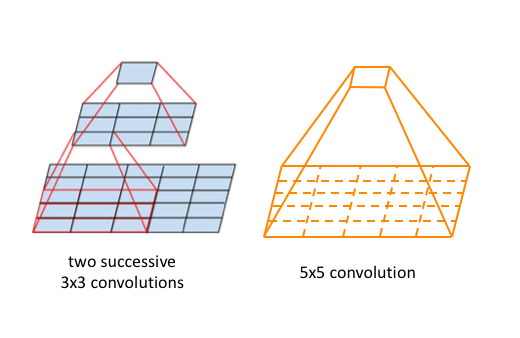
- **Factorized Convolution(Inception V2)**,二維卷積變為行列分別卷積,先行卷積再列卷積,
$$
(K \times K) \rightarrow (K \times 1 + 1 \times K)
$$
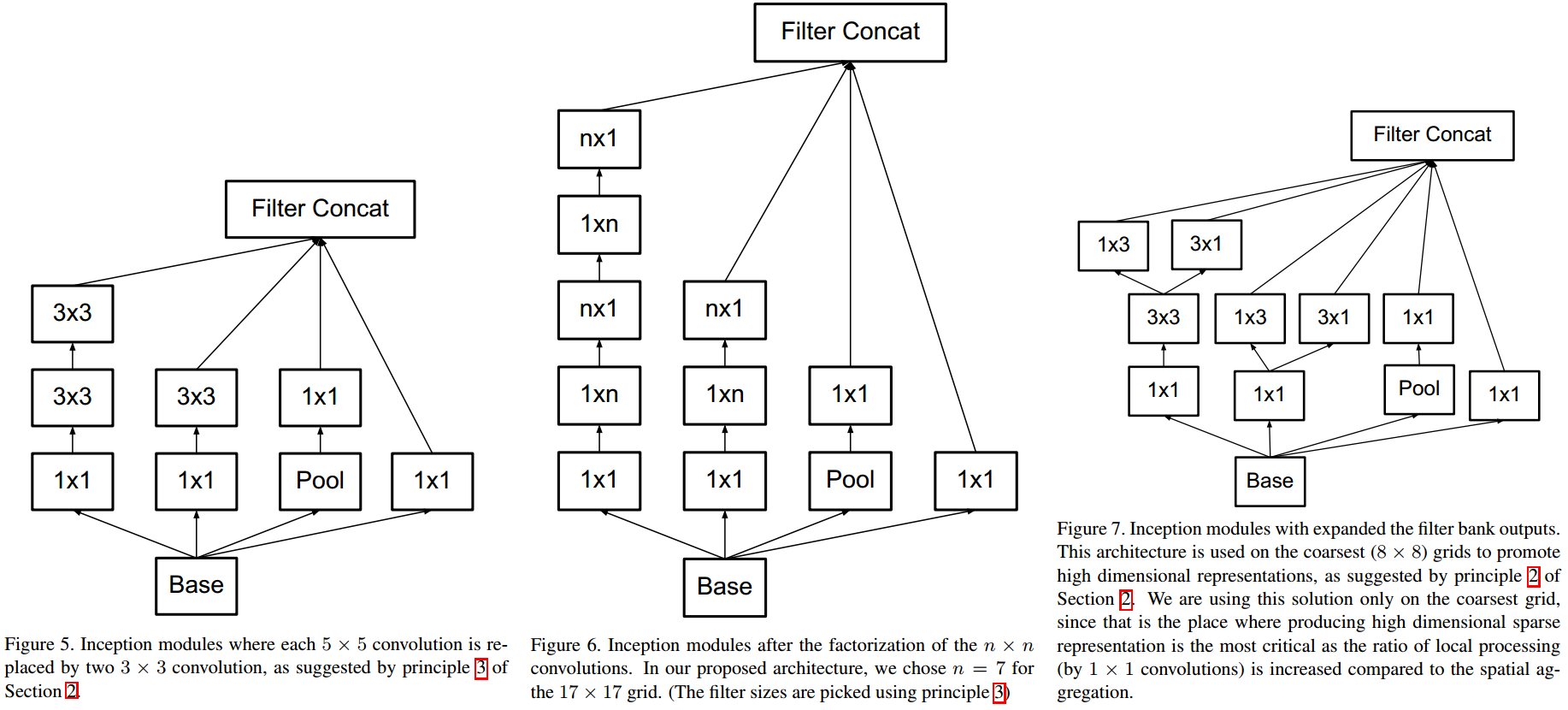
- **Fire module(SqueezeNet)**,pointwise+ReLU+(pointwise + 3x3 conv)+ReLU,pointwise降維,同時將一定比例的$3\times 3$卷積替換為為$1 \times 1$,
$$
(K \times K \times M \times N) \rightarrow (M \times \frac{N}{t} + \frac{N}{t} \times (1-p)N + K \times K \times \frac{N}{t} \times pN) \\
K = 3
$$
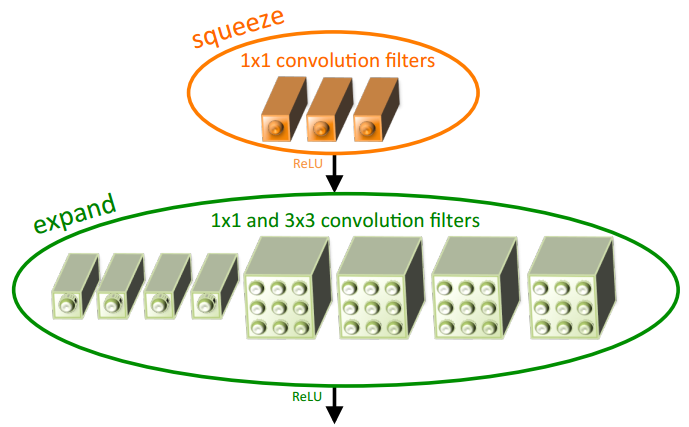
- **Bottleneck(ResNet)**,**pointwise+BN ReLU+3x3 conv+BN ReLU+pointwise**,類似於對channel維做SVD,
$$
(K \times K \times M \times N) \rightarrow (M \times \frac{N}{t} + K \times K \times \frac{N}{t} \times \frac{N}{t} + \frac{N}{t} \times N) \\
t = 4
$$

- **ResNeXt Block(ResNeXt)**,相當於引入了group $3\times 3$ convolution的bottleneck,
$$
(K \times K \times M \times N) \rightarrow (M \times \frac{N}{t} + K \times K \times \frac{N}{tG} \times \frac{N}{t} + \frac{N}{t} \times N) \\t = 2, \ G = 32
$$
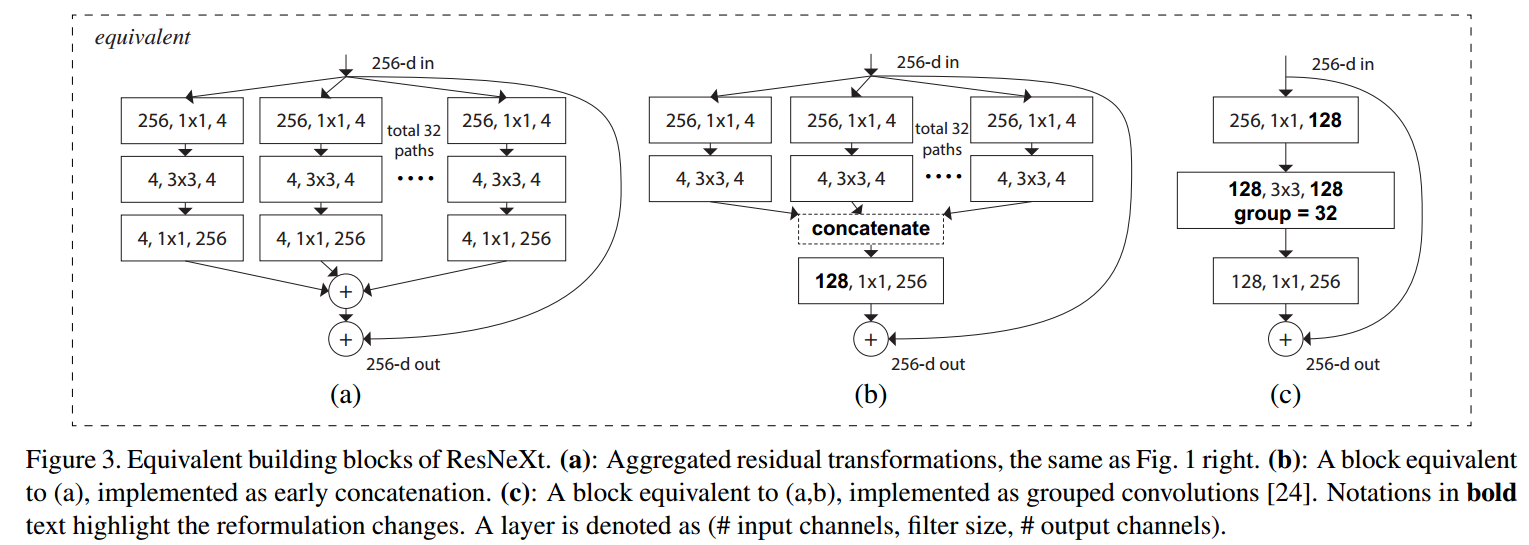
- **Depthwise Separable Convolution(MobileNet V1)**,**depthwise +BN ReLU + pointwise + BN ReLU**,相當於將channel維單獨分解出去,
$$
(K \times K \times N) \rightarrow (K \times K + N)
$$
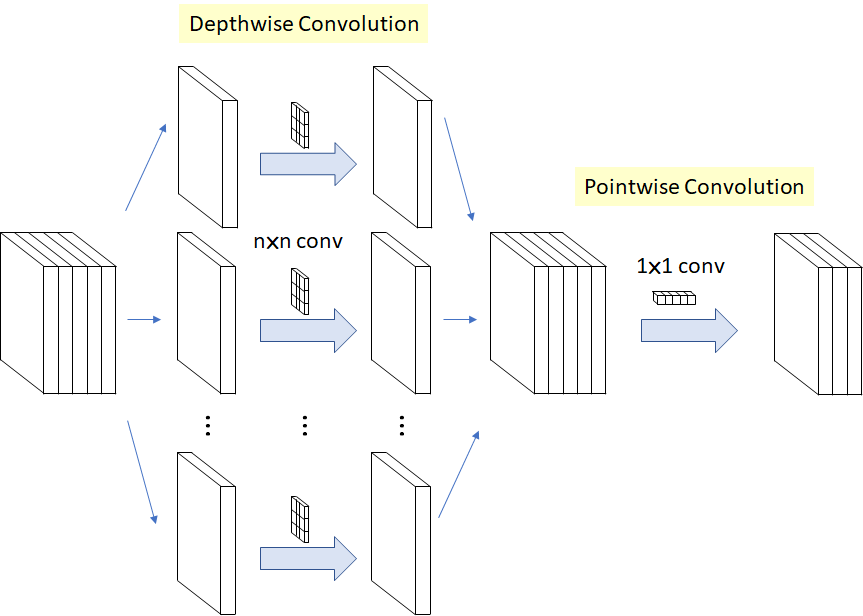
- **Separable Convolution(Xception)**,**pointwise + depthwise + BN ReLU**,也相當於將channel維分解出去,但前後順序不同(但因為是連續堆疊,其實跟基本Depthwise Separable Convolution等價),同時移除了兩者間的ReLU,
$$
(K \times K \times M) \rightarrow (M + K \times K)
$$
但實際在實現時還是depthwise + pointwise + ReLU。。。
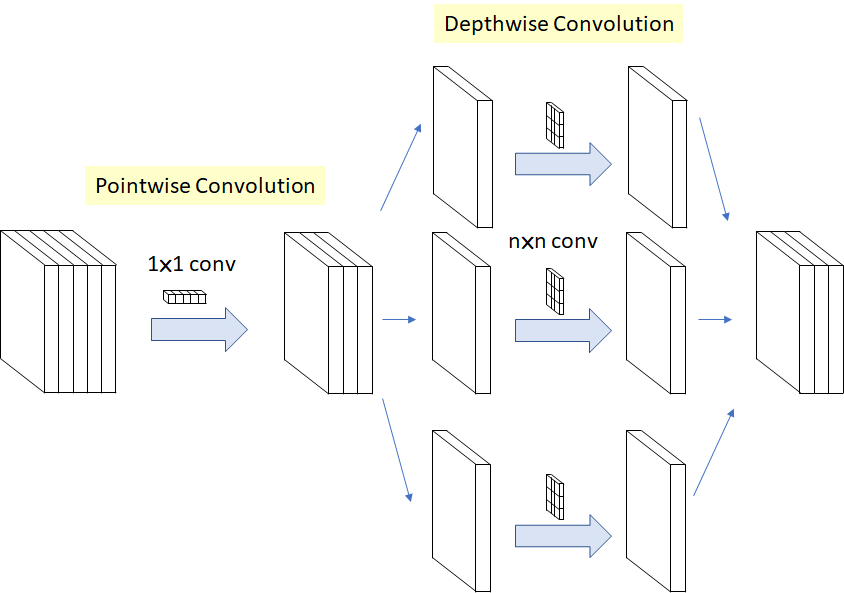
- **pointwise group convolution and channel shuffle(ShuffleNet)**,**group pointwise+BN ReLU+Channel Shuffle+depthwise+BN+group pointwise+BN**,相當於bottleneck中2個pointwise引入相同的group,同時$3\times 3$ conv變成depthwise,也就是說3個卷積層都group了,這會阻礙不同channel間(分組間)的資訊交流,所以在第一個group pointwise後加入了channel shuffle,即
$$
(K \times K \times M \times N) \rightarrow (\frac{M}{G} \times \frac{N}{t} + channel \ shuffle +K \times K \times \frac{N}{t} + \frac{N}{tG} \times N)
$$
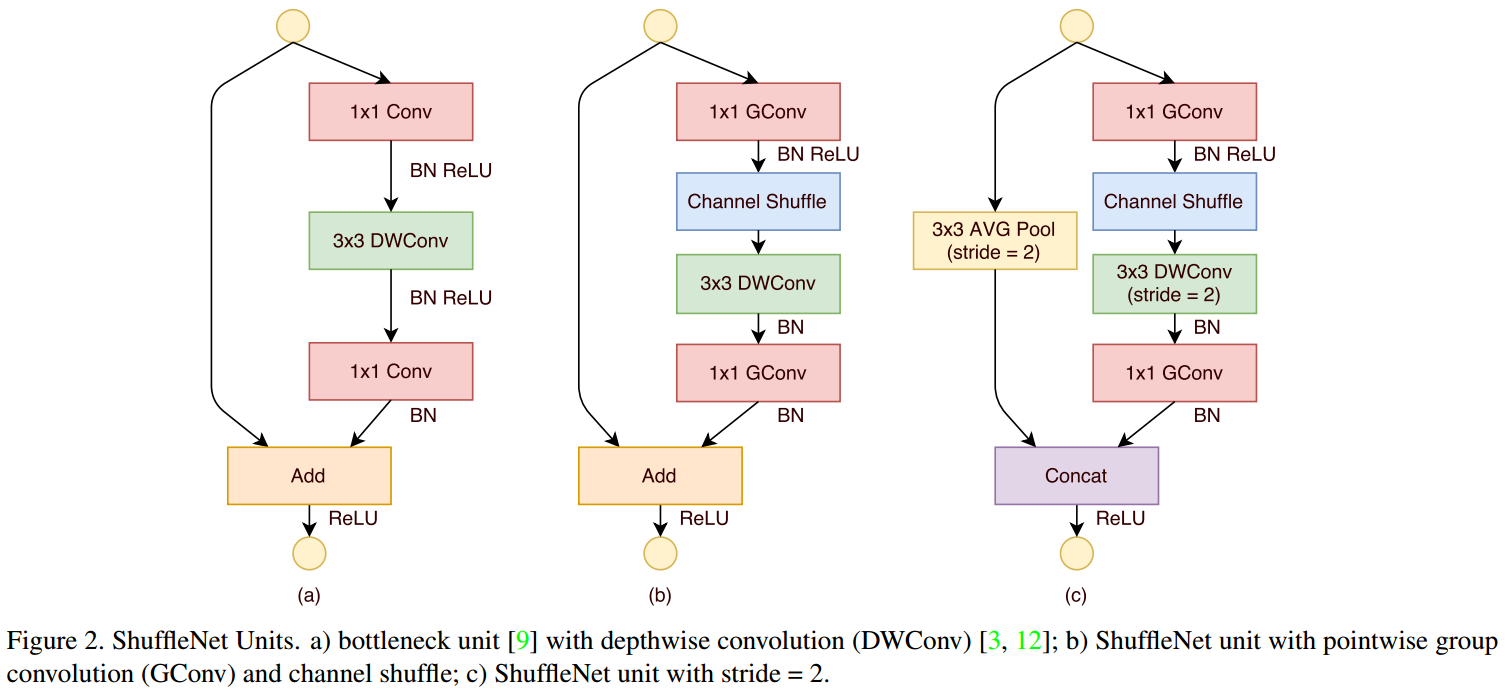
- **Inverted Linear Bottleneck(MobileNet V2)**,bottleneck是先通過pointwise降維、再卷積、再升維,Inverted bottleneck是先升維、再卷積、再降維,**pointwise+BN ReLU6+depthwise+BN ReLU6+pointwise+BN**,
$$
(K \times K \times M \times N) \rightarrow (M \times tM + K \times K \times tM + tM \times N) \\t = 6
$$
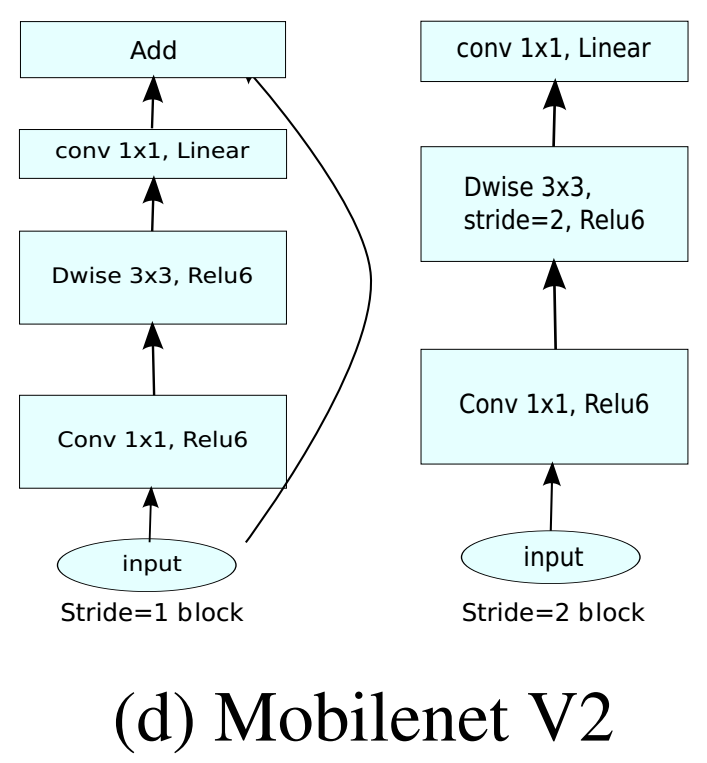 # 小結
最後小結一下,早期的CNN由一個個常規卷積層堆疊而成,而後,開始模組化,由一個個 module構成,module的演化,可以看成是不停地在常規卷積的計算量$FLOPS = K \times K \times M \times N \times I \times I$上做文章。
- **拆分**:卷積核是個3 D 的tensor,可以在不同維度上進行拆分,行列可拆分,高也可拆分,還可以拆分成多段串聯(類似SVD)。
- **分組**:如果多個卷積核放在一起,可以構成4D的tensor,增加的這一數量維上可以分組group。
不同拆分和分組的方式排列組合就構成了各種各樣的m
# 小結
最後小結一下,早期的CNN由一個個常規卷積層堆疊而成,而後,開始模組化,由一個個 module構成,module的演化,可以看成是不停地在常規卷積的計算量$FLOPS = K \times K \times M \times N \times I \times I$上做文章。
- **拆分**:卷積核是個3 D 的tensor,可以在不同維度上進行拆分,行列可拆分,高也可拆分,還可以拆分成多段串聯(類似SVD)。
- **分組**:如果多個卷積核放在一起,可以構成4D的tensor,增加的這一數量維上可以分組group。
不同拆分和分組的方式排列組合就構成了各種各樣的m
 # 小結
最後小結一下,早期的CNN由一個個常規卷積層堆疊而成,而後,開始模組化,由一個個 module構成,module的演化,可以看成是不停地在常規卷積的計算量$FLOPS = K \times K \times M \times N \times I \times I$上做文章。
- **拆分**:卷積核是個3 D 的tensor,可以在不同維度上進行拆分,行列可拆分,高也可拆分,還可以拆分成多段串聯(類似SVD)。
- **分組**:如果多個卷積核放在一起,可以構成4D的tensor,增加的這一數量維上可以分組group。
不同拆分和分組的方式排列組合就構成了各種各樣的m
# 小結
最後小結一下,早期的CNN由一個個常規卷積層堆疊而成,而後,開始模組化,由一個個 module構成,module的演化,可以看成是不停地在常規卷積的計算量$FLOPS = K \times K \times M \times N \times I \times I$上做文章。
- **拆分**:卷積核是個3 D 的tensor,可以在不同維度上進行拆分,行列可拆分,高也可拆分,還可以拆分成多段串聯(類似SVD)。
- **分組**:如果多個卷積核放在一起,可以構成4D的tensor,增加的這一數量維上可以分組group。
不同拆分和分組的方式排列組合就構成了各種各樣的m
